Brined olives, a delicious homemade preserve to prepare in autumn, the olive harvesting season. Brining is an easy way to preserve both green and black olives. For the preparation of this special preserve, only water, salt, and aromas are used. Many preparations require the use of caustic soda, but since it is also dangerous to handle, we avoid using it and rely on grandma’s traditional method to sweeten the olives, simply soaking them for about twenty days, changing the water at least twice a day, before proceeding to the brining process that allows these delicious olives to be preserved for more than 2 years, tasty and firm, they don’t become soft. Brined olives are perfect for preparing enticing appetizers or for a rich buffet of starters, in fact, they are never missing in the Rustic Calabrian Appetizer, but they are also great to use in preparing our favorite dishes, as many famous Mediterranean dishes use brined olives, whether green or black, like my delicious Mixed Vegetable Caponata.
To prepare brined olives, I select the most beautiful, plump, and shiny but firm olives, without bruises and without marks, to preserve them at their best. Those who are not lucky enough to have a tree in the garden or countryside buy them already harvested and selected, trust me they will turn out delicious just the same. You asked me where to buy olives; you can find them at local markets, here also from trucks, they sell them in bags, or from your trusted greengrocer, if not from a farmer who owns an olive grove. In Calabria, the Carolea variety is very common, which is very fleshy and sweetens quickly, but those who find other olives can prepare them in brine without any issues, maybe simply prolonging the debittering period of the olives by a few days. I have also tried the Nocellara variety, which also has more or less the same debittering period. So, I leave you with the recipe to preserve olives in brine, so you can prepare them too, and make them because they are delicious, and they are also a very important food in the Mediterranean diet, as they are rich in antioxidants that fight cellular aging, and they are also rich in good fats that decrease the level of cholesterol in the blood and help in the prevention of cardiovascular diseases.
Here are all the recipes for preserving green and black olives.
Other recipes with olives.
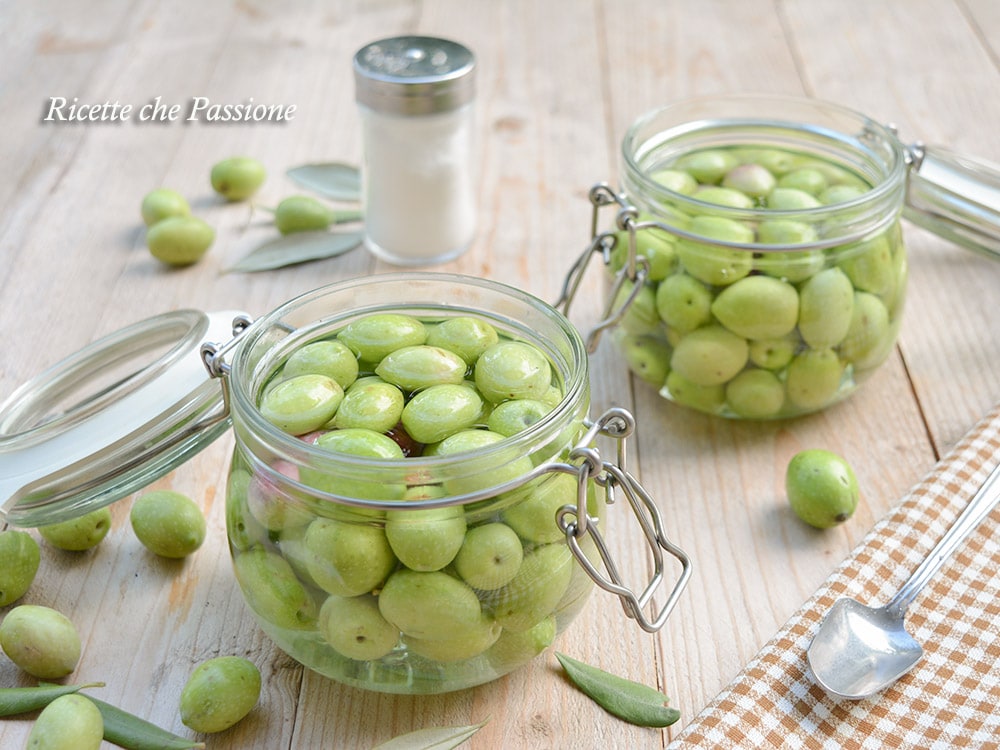
- Difficulty: Very Easy
- Cost: Economical
- Rest time: 20 Days
- Preparation time: 20 Minutes
- Portions: 2 jars
- Cooking methods: Boiling
- Cuisine: Italian
- Seasonality: Autumn
Ingredients for Preserving Green (or Black) Olives in Brine
- 2.2 lbs green olives
- 2.8 oz salt
- 1 quart water
- 2 leaves bay leaf
- peppercorns to taste
- chili peppers to taste
- as needed wild fennel
- lemon to taste
Tools for Preserving Olives in Brine
- 2 Jars
- 1 Small pot
- 1 Bowl
Steps on How to Preserve Olives in Brine
For the preparation of brined olives, we get excellent olives, without bruises, and without marks.
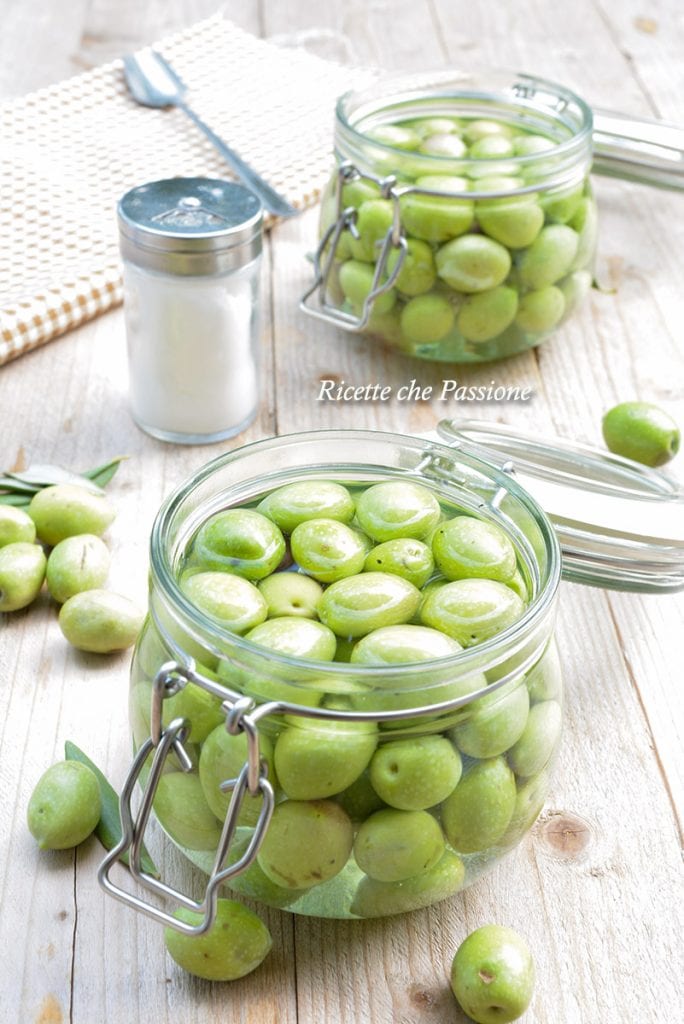
1st step, debittering the olives. We wash the olives well and soak them in clean water, without salt in a jar or in a bowl. We leave them to soak until they are sweetened, which takes from 10 to 20 days or even more, depending on the variety of olives we are using. Change the water in the olives at least once a day, better 2 times. So for 10-20 days, we keep the olives soaking in cold water and every day we replace the water with clean water, even 2 times a day to speed up the process. Do not worry if you see the olives stain during the debittering period in water, it is normal for them to become like this, gradually the color will become more uniform. No salt is needed during this period.
Freshly harvested green olives
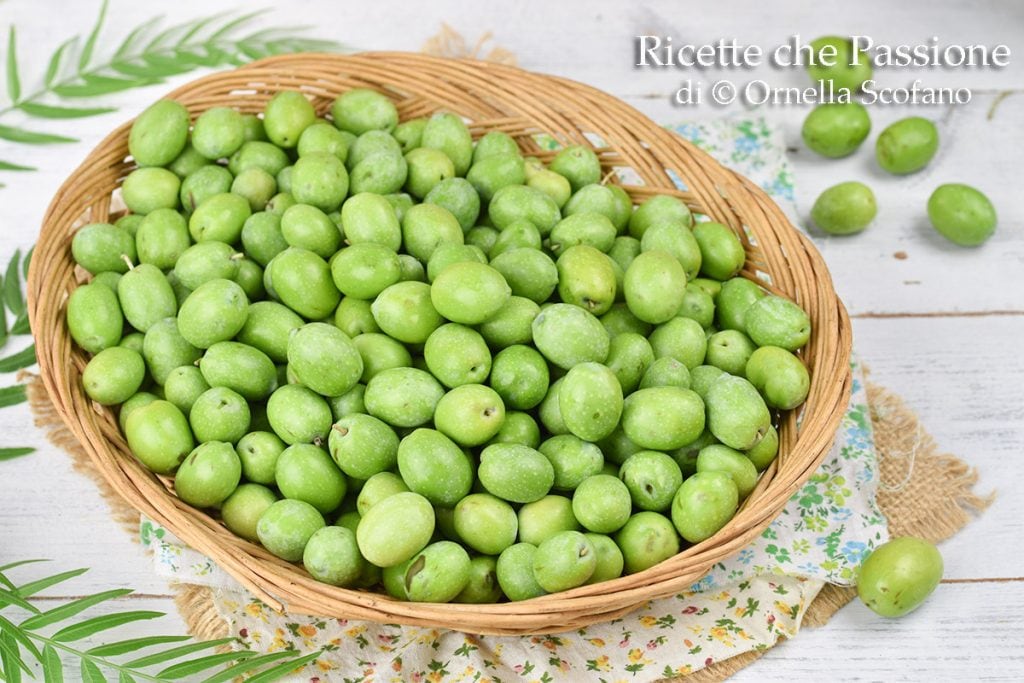
2nd step. Sweetness test. To see if the olives are sweetened, we can already try one after 10 days; if it is slightly bitter, we can preserve them. If the olives are very bitter, we continue with the debittering process, keeping them soaking. If we preserve them slightly bitter, they will become sweeter in the brine, but if they are very bitter it will take much longer.
3rd step. Preparing brine for the olives. We put water and salt in a small pot, bring it to a boil, turn off the heat, and let it cool completely. I use 2.8 oz of salt for each quart of water, the amount of liquid to prepare varies depending on the amount of olives we have to preserve, we don’t have to use all the water just cover the olives. For each quart of water, we will use 2.8 oz of salt but slight variations can be made, especially if the olives are very large, up to 3.5 oz of salt per quart can be used, and conversely if the olives are small even 2.5 oz of salt per quart of water.
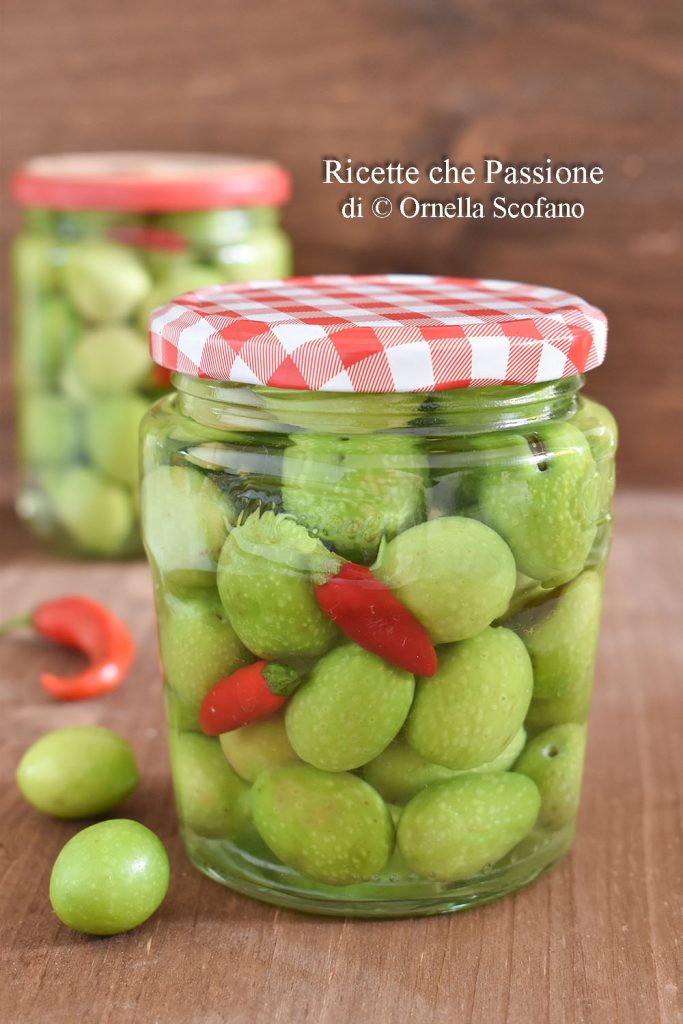
4th step. Preserving olives in jars. We put the sweetened olives in sterilized jars, adding, if desired but not necessary, flavors such as bay leaves, chili peppers, even garlic, fennel seeds, peppercorns, or even chili peppers treated first with vinegar for 12 hours, then we cover with the cooled brine, using enough water to cover the olives well, we don’t have to use it all. You can also use a few slices of lemon to help preserve the green color, or a tablespoon of vinegar. We use appropriate spacers to keep the olives below the water level and close the jars, without tightening too much, during the first weeks the jars should not be tightly sealed but closed lightly because fermentation may occur.
5th step. Storing olives in the pantry. We leave our olives in jars in the pantry for several months, during which they gain flavor, continue to sweeten, and become perfect to taste. Usually, it takes a few months before enjoying them in all their goodness, we can already try them after the first month and if they are still bitter, we leave them to rest further, then they will be ready to enjoy. Usually, mine are ready for Christmas, and I serve them for holiday appetizers. You will also see that at the end the color will be uniform.
Brined Olives
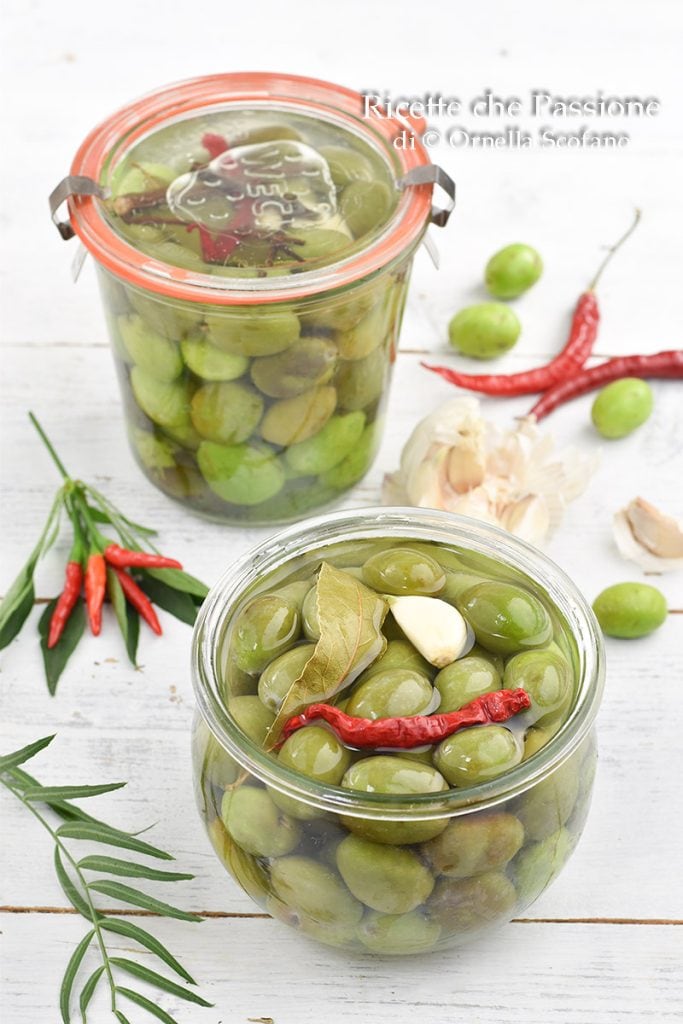
The page contains affiliate links
Useful to know.
Never overfill the jars, but use spacers to keep the olives submerged in the brine, so the olives can remain well-covered for perfect long-term preservation.
It may happen that during the first phase of preservation, in the first weeks of the olive brine, they ferment, you can see the water slightly bubbly, it is nothing dangerous, but it is a normal process at this stage, it happens when the olives are not completely debittered, so this process occurs, over time this fizzing will disappear, and the olives will not be affected. For this reason, during the first phase of preservation, it is recommended to cover the jars but not seal them hermetically.
It may also happen that a white film forms on the surface of the brine, this is also completely normal, the olives are not spoiled, indeed, just wash the olives and use them in cooking as usual.
And here they are ready, the olives after 2 years still firm and very tasty, the color becomes uniform at the end of the process, while during the processing it is completely normal to see them with spots.
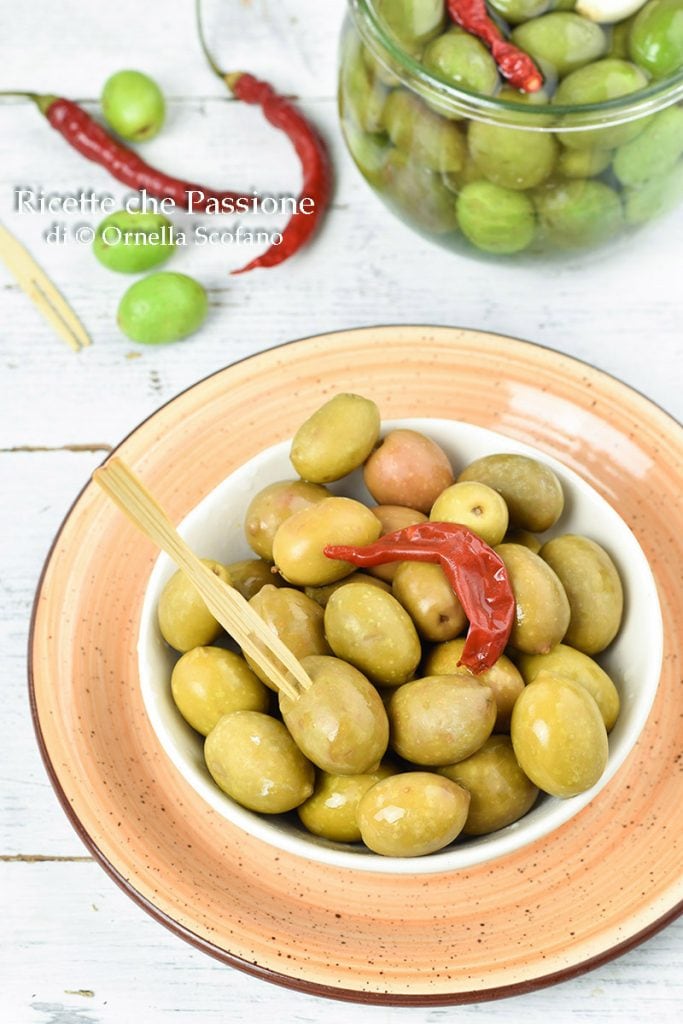
You can prepare brined olives with vinegar, they become even more delicious.
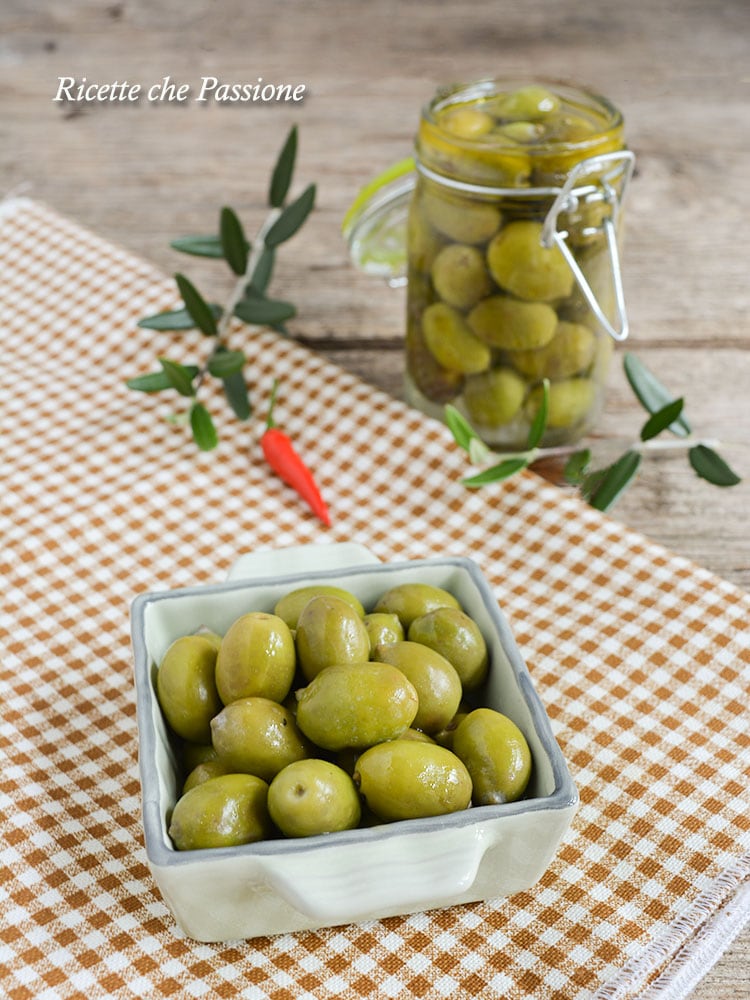
FOR A CORRECT PREPARATION OF HOMEMADE PRESERVES
For a correct preparation of homemade preserves consult the guidelines of the Ministry of Health.

